Final Fantasy VII Rebirth, the second installment of Square Enix’s audacious project to remake the original 1997 RPG, released on February 29. In the weeks since its launch, it’s clear that Rebirth is a massive RPG full of a wide variety of side activities and quests, but it also weaves an equally epic and cryptic tale of fate, heroism, villainy, and tragedy.

Editor’s note: It’s been a few weeks since the launch of Final Fantasy VII Rebirth at this point, so hopefully most of the diehards have been able to complete the game’s central campaign. However, a great many of you may not have finished it yet, or may just wish to keep avoiding spoilers. That’s cool and totally understandable — here’s your chance to hit the back button now. This piece exists because a ton of people are searching for information on endings and how to get them, so there’s clearly a demand for it. — David
Understanding FF7 Rebirth is no easy task. It’s a dense tale that’s both a sequel to 2020’s Final Fantasy 7 Remake and a recreation of an already lengthy RPG on the original PlayStation. And its world has expanded over the years with a video game sequel and prequels, a film sequel, and novels. It’s a Joycean level of detail which requires a close reading of multiple forms of media to understand completely. But for now, it seems safe that the original game and Remake are largely all that’s needed to decrypt the ending of Rebirth (and maybe Ever Crisis).
This guide will discuss events that happen in Rebirth with the goal of painting a clear picture of the plot. It won’t speculate on its artistic merits or achievements or whether the ending is “good” or not.
While I will make allusions and some references to the original FF7, I won’t be discussing expanded material like the prequel, Crisis Core, or the film sequel Advent Children. I also won’t be doing a strict comparative reading of Rebirth and the original 1997 game as that’s well beyond the scope of this guide—not to mention the rushed and fraught translation of the English version of FF7 makes it tough to do proper criticism without being able to read and speak Japanese (which I do not).
Let’s start by recapping exactly what happens in the final chapters of Final Fantasy 7 Rebirth.

Editor’s note: I’m not playing, back out now if you haven’t finished the campaign and don’t want spoilers. This is your second and final warning. — David.
A quick rundown of Rebirth’s ending moments
Rebirth is ripe for speculation and theorycrafting, some of which I’ll engage in here, but let’s just layout what happens in Rebirth from chapter 12 to the end as objectively as possible.
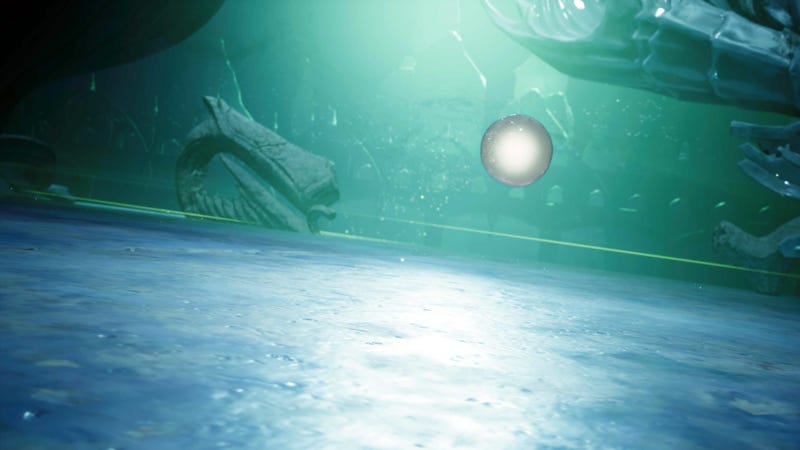
The Temple of the Ancients and transference of the White Materia
Near the end of the game, the party races to the Temple of the Ancients to recover the Black Materia, an object of great power which Sephiroth hopes to use for his evil plans. After raiding the Temple, and some back and forth conversation between Sephiroth, Cloud, and Aerith, Sephiroth seems to take ownership of the Black Materia.
Then, Aerith and Cloud take part in a confusing set of events in another version of reality where they go on a weird date in Midgar before Aerith gives Cloud an orb of White Materia and shoves him through some strange spatial dimension.
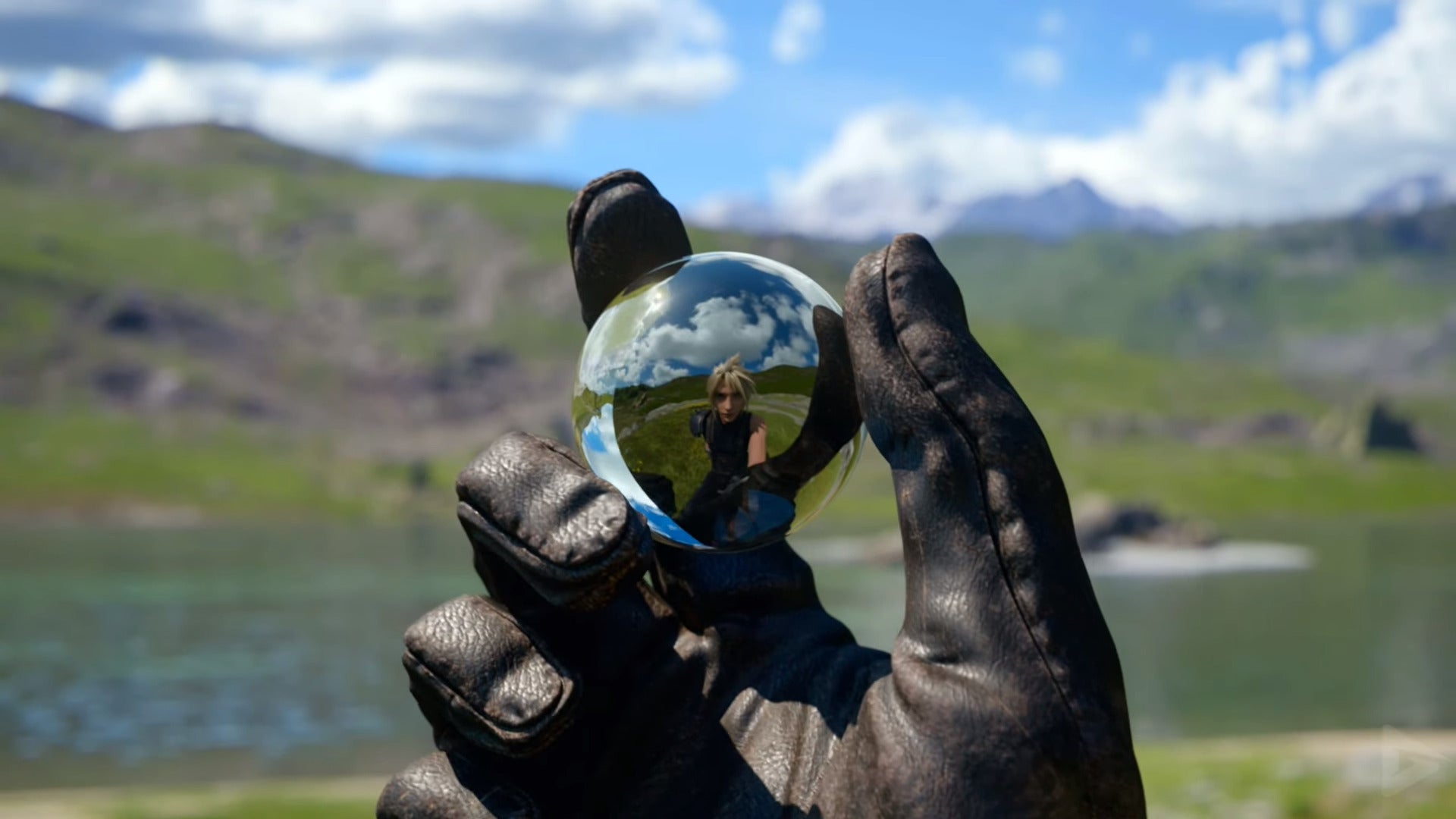
The White Materia is super important
We caught sight of this White Materia on a few different occasions in Rebirth: During the opening prologue, Zack notices it fall from Aerith as he holds her in his arms in the prologue. Then, after taking a breather at Johnny’s Seaside Inn at Costa del Sol, Aerith tells Red XIII that her materia has been drained (presumably by the Whispers). What remains is a perfectly clear orb. In the original FF7, this materia is used to summon Holy, which effectively protects the Planet from destruction, thus stopping Sephiroth’s goal of destroying everything.
After Cloud is shoved through the dimensional floor by Aerith, Sephiroth appears and delivers a speech about the “true nature of reality” while beseeching Cloud to work with him toward a vague goal of defying destiny.
Cloud then appears in a forest holding the White Materia and hears Sephiroth telling him that it “doesn’t belong here.”
Schrödinger’s Aerith: Her death and the battles with Sephiroth
After a skirmish with some Whispers, Cloud has a conversation with Aerith in this mystical forest. She trades Cloud the full White Materia for her drained, empty one and leaves. It becomes clear Cloud is experiencing a kind of vision while unconscious, and that the party has been dragging him through the forest this whole time while they search for Aerith, who has gone missing.

The party continues on to an ancient, abandoned city built by the Ancients/Cetra. Cloud ventures forth to find Aerith who is praying to the Planet. His body then acts against his will seemingly to try and kill her. As in the original, Sephiroth descends from the sky with his sword to kill Aerith.
At this moment, Cloud perceives multiple versions of reality where in some instances he saves Aerith, and in others he fails and she dies. The scenes change from her being alive, to her lying on the ground, to clear indications that she’s dead such as blood on the ground and on her. After this totally-not-confusing-at-all sequence, Cloud realizes that he’s in the reality where Aerith dies. The filled-in White Materia, as it did in the original FF7, falls from Aerith and lands in the lake below Cloud and Aerith. A battle with one of the forms of Jenova and multiple forms of Sephiroth ensues. Zack crosses timelines, Aerith returns momentarily to fight. Zack is then separated from the others by the end of the fight.
When the fighting is over, the party mourns the loss of Aerith. Cloud is still able to see her spirit and can also see something in the sky indicating that the Planet is dying. He is the only one who can see Aerith or this phenomenon (though Red XIII seems to be able to sense Aerith’s spirit and even calls out to her in a scene that never fails to reduce me to a crying mess).

Shortly before the party boards the now-repaired Tiny Bronco, Cloud reflects on the empty White Materia before realizing that he still possesses the Black Materia (I’ll address Aerith’s claim that the Black Materia is fake later on). He equips it to his sword and heads over to join the others, telling no one he has it.
Cloud and Aerith’s spirit share a final conversation in which Aerith says that she will stop the Meteor and Cloud promises to stop Sephiroth. Cloud boards the Tiny Bronco which flies away, leaving Aerith’s spirit to say goodbye to the party as emotional music plays.
A final title card states that “No Promises Await at Journey’s End” before the credits roll (and we all cry hysterically).
Essential history in the Temple of the Ancients
Let’s address a few things that happen in the Temple of the Ancients as they’re really important.
As far as the original FF7 is concerned, and much of Rebirth, the Black Materia can be used to summon a massive meteor to destroy the planet. This was the end goal of Sephiroth in the 1997 game, which was ultimately thwarted by the party, the Lifestream, and Aerith’s spirit (she appears a few times after her death in the original game).
Rebirth seems to keep Sepiroth’s plans in place, now with a multiverse twist. It also adds the origin of the Black Materia to the lore: The Gi, who are not native to the Planet and thus cannot return to the Lifestream (which is stated in the original FF7) upon death, created it and have asked Cloud and co. to recover it so that they may be able to use its power to finally die and rest.
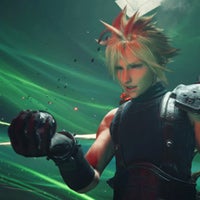
Is the Black Materia real? Aerith said it’s a fake.
Cloud’s possession of the Black Materia at the end of Rebirth is an important deviation from the original narrative. We’ll have to wait until part three to understand what’s going on with this change.
What appears to be similar to the original, however, is the nature of the Black Materia: It isn’t the Keystone or the orb which was stolen from the Temple, but it’s the Temple itself. The Ancients sought to hide the materia from any who’d use it, and so had it transmogrified into the form of a temple, which would close around any who tried to take it. It’s my current assertion that this is what Aerith means when she says the materia is “fake.” The orb in question during that scene is not the Black Materia; instead, the Black Materia is the very temple they’re all standing in.
After a romp through the Temple of the Ancients, the party gets a bit of a lore dump from the voices of the Ancients/Cetra about an ancient war between humanity and the Cetra, the Cetra’s duty to protect the planet, and the role Jenova played in all of this. As Cloud tells Tifa in a bout of madness before attempting to kill her at the Gongaga reactor, Jenova can disguise herself as “those we hate, those we love, those we fear—Jenova would become anyone to fool her prey.” This is repeated by the Cetra in the Temple of the Ancients and is what makes Jenova so dangerous:
Long ago, a wound marred the northern lands. And to mend it did many venture forth, only to meet with disaster. A deceiver that stole the faces of the dead—of mothers and fathers, sisters and brothers lost. With their voices did it sow the seeds of discord among our people—among the children of man. For the planet did we [the Cetra] lay down our lives in battle, and in death returned to her embrace. Yet our adversary [Jenova] did not. Could not. Thus did it fall into a deep slumber. And in the long silence of its sleep, it was given the name Jenova.
If you’ve played the original FF7, this should sound familiar. Jenova, an alien entity often referred to as the “Calamity” (an essential word when trying to understand FF7), is capable of infiltrating the minds of her victims, making them doubt reality, posing as other people, and causing absolute destruction. FF7’s science fiction rationalizes this by saying that the power comes from Jenova’s very cells, allowing the Shinra company to harvest and experiment with it, the most notable of results being the creation of Sephiroth who now sees Jenova as his mother.
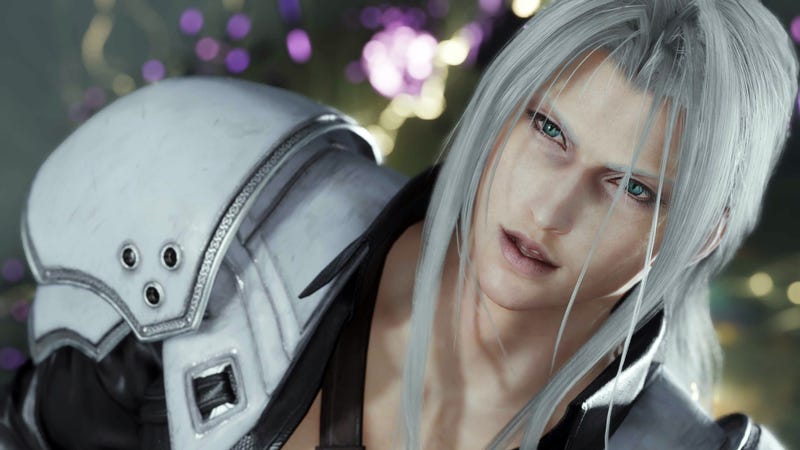
The Cetra’s history lesson continues with a potentially very important bit of language.
Heed well our warning of that which is to come. The reunion. When our adversary’s scattered malignancy shall converge to plague the planet once more.
Sephiroth later repeats this, stating that Jenova is “fragmented” and shall be made whole once “these errant worlds” are brought together. Given Rebirth’s themes of different worlds, this might be more than just a reference to the way in which Jenova appears in different places (often as separate body parts that transform into a larger boss the party must fight, as aboard the Shinra 8 ship and in the capital city of the Ancients).
Sephiroth states that, essentially, his goal is to “reach into infinity [to] encompass worlds unbound by fate and histories unwritten” as well as unite the separate parts of his mother (Jenova). The end result of this, it would seem, is some kind of singular existence where they’ll all cancel each other out into nothing—a singularity, if you will—in which only Sephiroth (and maybe Jenova?) will remain for apparently all time.
Aerith tries to throw some cold water on this goal on at least one occasion when she says to Sephiroth that “there’s no such thing as forever.” Sephiroth counters by suggesting that he will essentially create forever through his actions. How any of this works is tough to discern, but it does bring us to talking about the more complicated side of FF7 Rebirth, the separate timelines.
Multiverses, timelines, and other wibbly wobbly, time-y, wimey stuff
In 2020’s Remake, players were introduced to the idea that fate and destiny are real forces in the world of FF7. There are even guardians, or Whispers, that exist solely to ensure that events carry out as they are preordained.
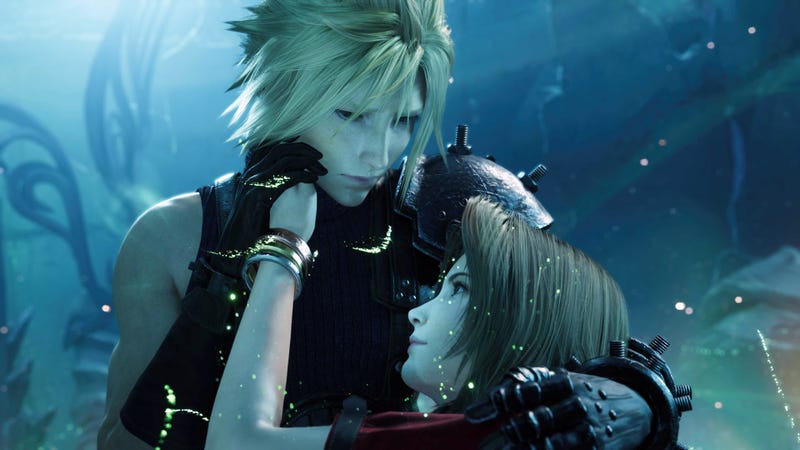
Preordained by who or what? That’s hard to answer right now. And there are still way more questions beyond that. Remake also teased that some characters who are thought to have died are now alive in another version of reality. Though Rebirth gives us a much wider look at what’s going on in this remake saga, it doesn’t reveal all of its cards. So let’s examine where Rebirth is most clear about the multiple timelines
While I’m going to argue that given the malicious nature of this character, and the direct evidence of his tendency to lie and twist the minds of characters, we ought to be skeptical of anything that comes out of his mouth, let’s hear from Sephiroth on what the hell is actually going on as he tells Cloud in chapter 14:
Behold…the true nature of reality. When the boundaries of fate are breached, new worlds are born. The Planet encompasses a multitude of worlds, ever unfolding. Some quickly perish, while others endure. Yet even the most resilient worlds are doomed to fade. Nevertheless, their loss is not to be mourned. For it is not death but a homecoming that awaits them. In the Planet’s embrace, all life is as one. All born are bound to her should this world be unmade, so too shall her children.
At this point, Aerith interjects via a voice over, saying that “[Sephiroth will] tell you that he only cares about the Planet. That he’d do everything in his power to protect and preserve it. But this isn’t the way it’s supposed to be.” It’s that last part which is really hard to understand. How is it supposed to be? Sephiroth continues:
Listen to the planet, Cloud. To her ecstatic cries. Her Rapture [Cloud states the planet is “screaming”] Oh, Cloud…I thought you might finally understand.
Cloud, lend me your strength. Let us defy destiny together. Seven seconds till the end. Time enough for you, perhaps. But what will you do with it? Let’s see. Let go of the past Cloud, for the future is bright. We are to bear witness to the reunion of worlds. [Cloud asks Sephiroth to leave him out of it]. How very stubborn of you. Perhaps you need a little push.
I give you my blessing.
So okay, let’s rewind a bit. According to Sephiroth (a proven liar), changes in fate result in new worlds being born (a super cool concept that real-world physicists have discussed and debated for years) and the Planet is a sort of a home or host to multiple timelines separately coexisting. As mentioned earlier, Sephiroth wants to bring those worlds together via a reunion and go be a big sad and lonely mama’s boy all on his own forever.
This explains why we’ve seen Zack live, as well as Biggs. But, according to the lore as we can best understand it thus far, their survival creates alternative timelines because it deviates from destiny. This has been reflected in appearances of an in-game fictional character named Stamp, who, like our very own Tony the Tiger or Chester Cheetah, is slapped on boxes and packages of consumer goods.
To date, we’ve seen at least five different iterations of Stamp (a Terrier, a Pug, a Shiba, a Spitz, and then a Beagle), indicating that we’re dealing with at least five different timelines. As far as I know, Stamp never appears in the original FF7.
Whether these realities or timelines always existed or we’re to believe they only existed after the party challenged fate at the end of 2020’s Remake isn’t clear. And neither is the reason why Zack and Biggs “survive” and move into different timelines while others do not. Cloud refers to these other timelines as “another world,” one that exists alongside others. Upon hearing this, Barret states, amusingly, that he doesn’t want to hear about it.
This exchange in the forest, I think, is a good place to end speculation on the multiple timelines: They exist, it’s possible to travel between them, Sephiroth is trying to merge all of them together. Anything beyond that will have to wait until the third game where, hopefully, we’ll learn more.
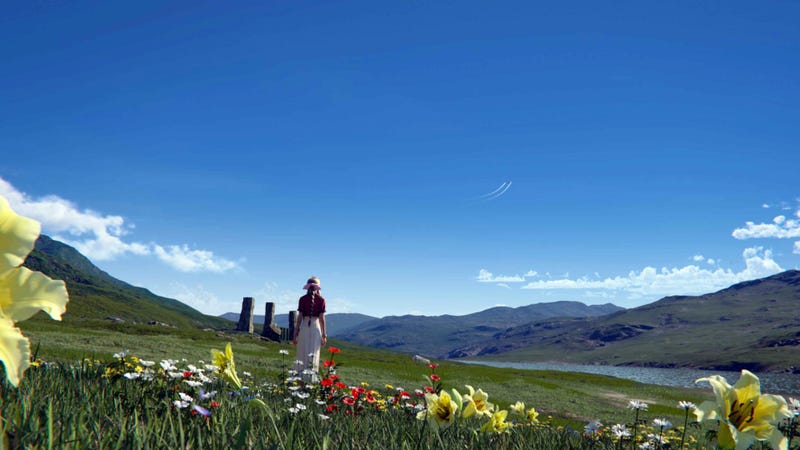
Unresolved FF7 Rebirth questions and food for thought
Arguably, Rebirth introduces as many questions as it answers. I’ve gathered up a few interesting observations and what I found to be unresolved questions. To that last point, it is possible that this very dense script (the video of the game I used for researching this guide is 21-hours long) does in fact answer some of these questions. I’ll update this guide should future studies reveal that.
Where does the original FF7 fit into all of this?
According to Sephiroth (an unreliable narrator if there ever was one), alternate timelines are created when deviations from fate happen. Is the original FF7 one of these alterations? Is it the original timeline? Did it happen before Rebirth and Remake or is it existing simultaneously?
Rebirth doesn’t appear to directly answer such questions. This lack of clarity leaves a number of unanswered questions: How did Sephiroth learn of this? Did he suffer defeat in FF7 and somehow survive (Advent Children suggests so) to learn about the different timelines and has thus concocted an even grander plan to enact his goals?
Is that even Sephiroth to begin with?
This is a question that’s arguably been in play since 1997. After going mad upon learning the truth of his origin and then murdering everyone in Nibelheim, Sephiroth is defeated by Cloud and thrown into the Lifestream.
Sephiroth is believed to be dead, but then reappears during the events of the original game, Remake, and Rebirth with various robed men assuming his appearance. He otherwise only appears in strange visions and moments in between space and time.
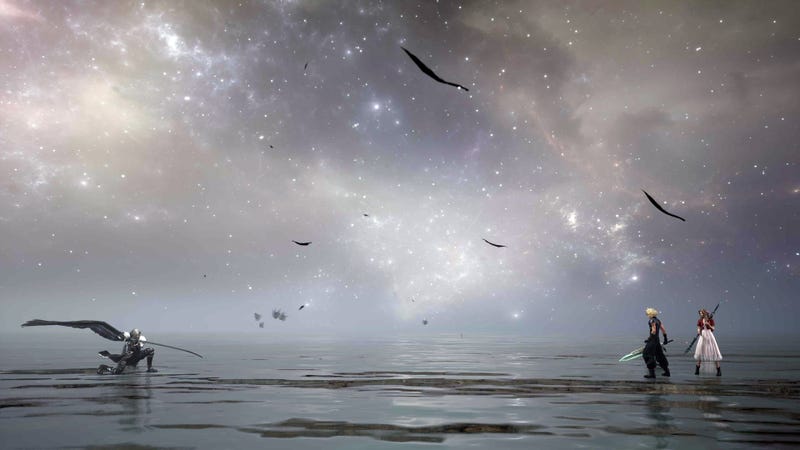
Is he even who he says he is? Who he appears to be? It’s clear that Jenova can assume the form of “those we hate, those we love, those we fear.” For Cloud, Sephiroth has been all three of those at different points in his life. Is Sephiroth even the actual antagonist of Rebirth, or is he merely the perfect avatar for Jenova to enact her goals?
Why don’t we see different versions of the characters?
Though we’re told and do see multiple timelines, we never see multiple versions of the same character interact with one another. We do see Kyrie, Elmyra, and Marlene in at least one of the other timelines, but not others. And when it seems like characters like Cloud and Aerith jump to different timelines, they occupy body duplicates that were otherwise permanently asleep.
Are there other timelines where the characters we know are conscious and actively fighting Sephiroth or Shinra? Are there original versions of these characters? Can they exist in the same timeline together?
What exactly happened at Cosmo Canyon?
I’ve watched Rebirth’s Cosmo Canyon sequence a number of times and still struggle to make sense of it. Tifa’s assertion of what’s happening in the Lifestream doesn’t land too well with the adherents of Planetology, and the entire narrative beat of Cosmo Canyon is wildly different from the original game.
In the original FF7, the Cosmo Canyon sequence is an important revelatory moment, one where certain truths of the world are revealed. In Rebirth, that’s not the case. Cosmo Canyon’s residents are depicted as folks stuck in rigid, conservative views of the planet and aren’t open to hearing things that challenge their perspectives.
Tifa seems to recount a story that paints a different picture of the Lifestream and urges folks to take action to protect it. The folks at Cosmo Canyon seem perfectly content to let the planet do its own work and protect itself and are not too happy by Tifa’s story and call to action.
I’m not clear on why these differences exist or what they’re actually about in the grand scheme of things. Regardless, I think repeat studies of the Cosmo Canyon chapter in Rebirth will likely provide more answers, or at least more fodder for thought.
Did Cloud lie to Yuffie about what happened with the Black Materia?
As the party searches for Aerith, Yuffie asks Cloud what happened at the Temple of the Ancients, saying:
Yuffie: [Aerith said] Sephiroth kicked the ever-livin’ crap outta you back in the Temple of the Ancients.
Cloud: You heard wrong. Didn’t go down like that.
Yuffie: Okay…Then how exactly did he get the materia from you?
Cloud: Uh…
Yuffie: You don’t always have to play the badass, y’know.
Cloud: Alright, fine, you win. He beat the shit outta me and took the materia.
It’s not clear to me that Cloud is telling the truth here, or telling what he thinks to be the truth. When he equips the Black Materia to his sword in the last few scenes of the game, he does appear to be surprised that he still has it. Did he misremember what happened at the Temple? Or does he know and chooses to not disclose that he has the Black Materia?
Did Cloud perceive the future?
This is a bit speculative, so bear with me. After Sephiroth gives Cloud the lore dump about multiple timelines, he shoves Cloud through a cutscene that’s very similar to the one that takes place before Cloud’s final showdown with Sephiroth in the original 1997 game.
That original sequence ends with him seeing and fighting the final form of Sephiroth. Of course, in Rebirth, he opens his eyes to land in the Sleeping Forest. It’s certainly some foreshadowing, but I’m left to wonder what exactly Cloud is perceiving here. It feels, based on his facial expression, that he’s almost expecting to arrive at the point where the 1997 game sends him, but that he’s surprised to find himself somewhere else.
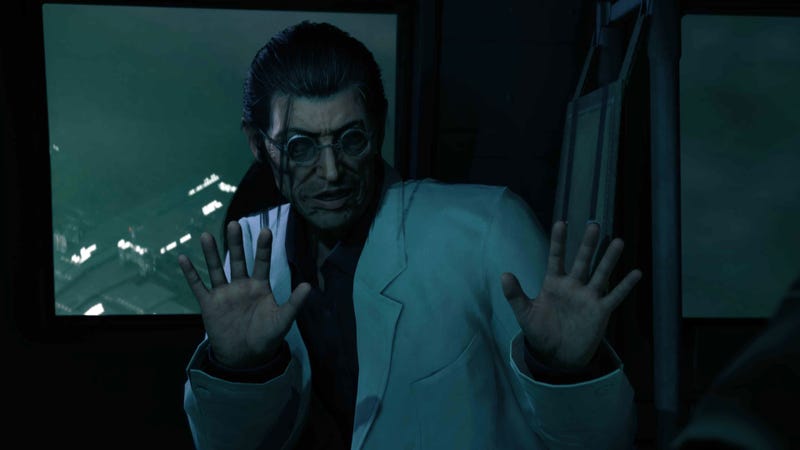
Beware, Hojo
Another key difference between Rebirth and the original game is that Hojo remains under the employ of Shinra. In the original, Hojo resigns from the company and goes on to cause trouble in different ways. In Rebirth he hangs around Shinra and his final line in the game is a chilling one:
Rufus: Tell me, professor. How would you explain the phenomena we witnessed at the temple?
Hojo: It would be premature to draw any scientific conclusions. But one thing is abundantly clear: We at Shinra could stand to dream far bigger.
Rufus: I agree
Shinra, as an antagonist force, creates problems by harvesting and exploiting the very nature of the planet (the Lifestream) and its history (Jenova). That Hojo is now inspired to do even more after witnessing the complicated phenomena on display at the Temple of the Ancients might foreshadow Shinra’s plans in the third game. What might a company that is willing to harvest the Planet’s spiritual energy, experiment with dangerous entities like Jenova, and much more do if it understood even a fraction of the multiverse nature of the Planet?
Tips for your own FF7 studies
As stated earlier, Rebirth is dense. But there are a few things to keep in mind if you’re looking to understand it more deeply and do some theorycrafting.
To start, you should pay attention to any scenes that discuss the nature of the Lifestream as well as Jenova and the Cetra; the word “Calamity” is also of note. Scenes with Sephiroth in it are all essential. Pre-rendered cutscenes are also important: You can tell these apart from other scenes by the prettier graphics, slight changes in the facial shapes of the characters, and the presence of their starting weapons even if you equipped different ones.
It may also be important to consider scenes that deal with themes of choice. The date with Cloud and Aerith in the alternate timeline is one example: Here Cloud, and the player, are allowed to choose specific things from vendors, but each time that choice is overridden. For a game that’s dealing with fate and choice, that strikes me as an important detail to consider.
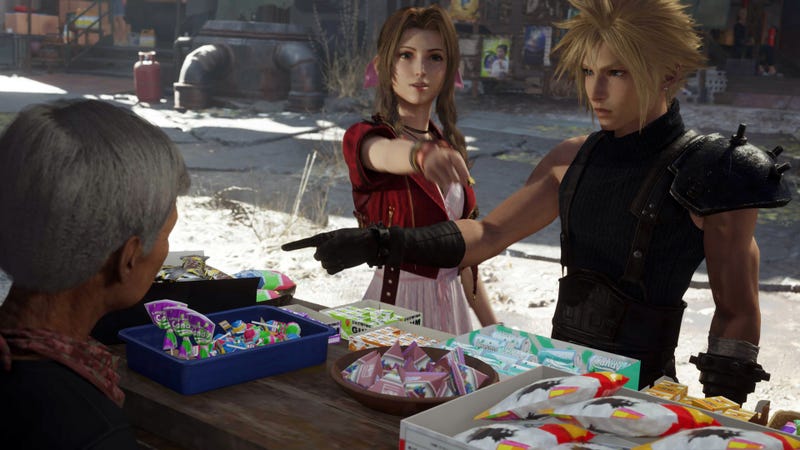
Also, dialogue in combat and during exploration is equally important to cutscenes where you have no control over the characters. While searching for videos of all cutscenes, try to pick ones that include these moments. This video from Gamer’s Little Playground seems to contain everything.
Lastly, transcripts and other fan-created materials can also aid in research. Right now the most accurate and complete transcript of Rebirth I’ve been able to find is this one from the Fandom wiki. At the time of this writing, it is still missing certain chapters. For cross-references with the original game (bearing in mind the issues with the 1997 version’s English script), I recommend this script.
Another very helpful tool is this handy visual guide created by Reddit user Recklessavatar. It appears to be an accurate depiction of the cross-timeline events that happen throughout Rebirth, though it seems to speculate that there are “Ultimate” versions of certain characters. At the time of this writing, I’m not totally sure the text of the game supports that assertion, but it’s not a terribly outlandish one.
Final Fantasy VII Rebirth is a colossal game that’s attempting to tell an impossibly complex story and nearly breaks the fourth wall and outright acknowledges that it’s a video game. It can be hard to sift through at times, but the material I’ve presented here ought to provide a good foundation for more nuanced thoughts and discussions about this epic story.
And, yes, in case you were wondering, it is my opinion that the game’s ending is excellent.
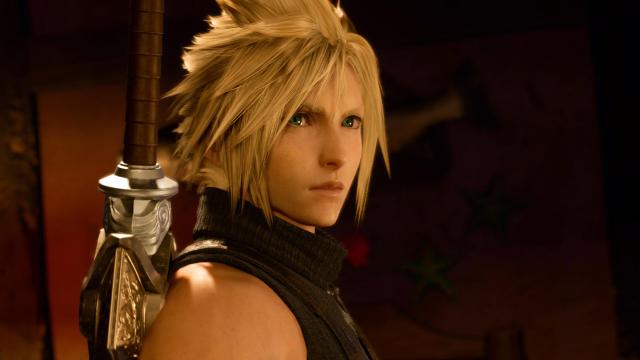
Leave a Reply